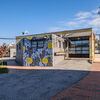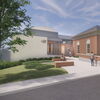New direction | Transitioning a property from its intended use offers both risk and reward
Transition is an inevitable part of life. It can bring both opportunity and risk. I have been thinking a lot about transition lately. Within the last four months I’ve become a new father (an experience hardly describable in a mere 800-word column). I have also made a significant professional move by joining NAI/The Dunham Group.
But, rather than bore you with tales of dirty diapers and new phone lines (773-7100 if you need me), I thought I’d highlight some local commercial properties that have gone through their own transitions. In my industry we call this “repositioning” a property. In other words, taking real estate that was designed for a specific use like a warehouse and converting it into another use like office or retail.
A recent and well-publicized local example is Waterfront Maine’s conversion of the former Cumberland Cold Storage building on Commercial Street in Portland into an office building. This development took incredible vision and fortitude considering the dilapidated condition of the building and the cumbersome zoning issues that arose. For years, the building housed no people. It was, as its name suggests, a basic cold storage warehouse. However, Waterfront Maine ignored the skeptics and is mere months from opening the doors to their new tenants, the largest of whom is Pierce Atwood. The building has been converted to what can only be described as a one-of-a-kind, Class-A law firm complete with high ceilings, exposed brick and beam, spectacular water and city views and all the standard amenities a high-end office user would expect.
Another great example of repositioning a property is just down the street from Cumberland Cold Storage. JB Brown & Sons converted the former Portland Star Match Co. building at 81 West Commercial St. to some of the most interesting office space in Portland. JB Brown, obviously not shy about commercial transition, did similar conversions of the Rainbow Mall on Washington Avenue (retail strip center into office space for Martin’s Point Health Care) and at the Saunders Brothers Mill site in Westbrook (mill space into office/warehouse mixed-use). In each case, they invested appropriately into their existing buildings, which enabled them to attract higher-paying tenants locking into long-term leases.
Unexpected transformations
Even properties designed for particular uses like a train station or auto dealership can be converted. The Roundhouse office campus in Portland, home to the Bureau of Motor Vehicles and a number of other office users, was formerly a train repair and warehousing building. Owned for years by Grand Trunk Railroad, it has slowly transitioned from a warehousing facility into some incredible office space. The units there have 16-foot ceilings, exposed timber and brick, oversized windows and a number of unique details embracing its history.
Perhaps no commercial stretch has seen as much recent development as Falmouth’s Route 1. Everything from banks, restaurants, office space and retail stores have been built this decade. One property is especially impressive given its former use. When Saab closed its dealership at 215 U.S. Route 1, the owners tried in vain to get a replacement tenant and even considered tearing down the building. Then they decided to change the use entirely. They were able to attract Bangor Savings Bank and Ace Hardware as new retail tenants while saving the bulk of the building, originally designed to sell cars.
An interesting trend I’ve noticed is the large number of institutional properties (municipal, state, university and church-owned) coming on the market. Often these are considered opportunities for residential conversions. The former University of Southern Maine dorms and the former St. Patrick’s school in Portland are good examples. A different approach is one that Peter and Anne Verrill took when they redeveloped the former Chestnut Street United Methodist Church into Grace Restaurant. This is one of the most exciting and impressive local redevelopments over the last five years. The owners were able to maintain the look and overall feel of the church and work them into what is now a fully functioning restaurant and banquet facility.
My new daughter and my decision to join a new firm are both intimidating and inherently risky endeavors. But both enable endless prospects for joy and fulfillment. Consider your own real estate holdings and think about alternative uses. Like life, weigh the risks and dare to embrace the opportunities.
Justin Lamontagne, broker at NAI The Dunham Group in Portland, can be reached at justin@dunham-group.com. Read more of Justin’s columns here.










Comments